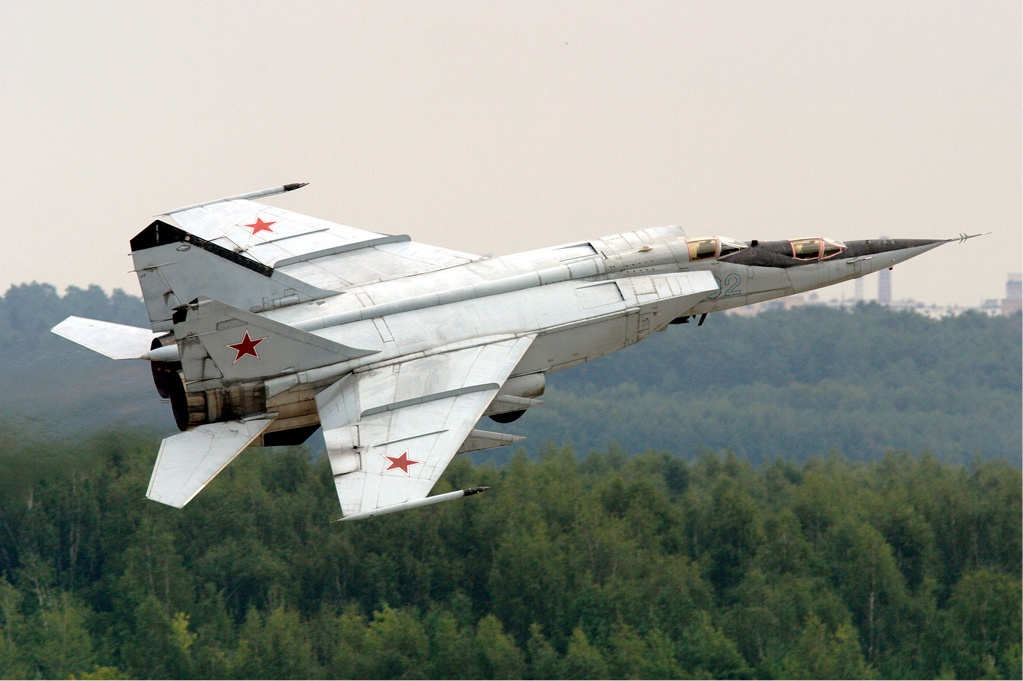Introduction
For decades, speed has been a prized advantage in aerial warfare. The ability to fly faster than your enemy meant better interception, quicker response, and greater survivability. In 2025, the list of the fastest military aircraft is dominated not by brand-new stealth fighters, but by older legends from the Cold War era. This raises an intriguing question: why have their records not been broken despite vast advances in aviation technology?
Capabilities of China’s Fifth-Generation Fighters and Their Competition with American Counterparts.
Top Speed Leaders
Mikoyan MiG-25 “Foxbat”
- Commissioned: 1970
- Top Speed: ~Mach 2.83 (≈1,900 mph)
Designed at the height of the Cold War, the MiG-25 stunned the world with its blistering speed and altitude performance. Though now retired from most active service, the Foxbat still ranks among the fastest combat aircraft ever flown.
Mikoyan MiG-31 “Foxhound”
- Commissioned: 1981
- Top Speed: ~Mach 2.83
Developed as the MiG-25’s successor, the MiG-31 was optimized as a high-speed interceptor capable of patrolling Russia’s vast northern airspace. It remains in service today and is still feared for its ability to cover huge distances at supersonic speeds.
McDonnell Douglas F-15 Eagle (including F-15EX)
- Commissioned: 1976
- Top Speed: ~Mach 2.5
The F-15 Eagle entered U.S. Air Force service almost 50 years ago. Despite its age, modern variants like the F-15EX remain front-line fighters because of their proven speed, payload capacity, and advanced avionics upgrades.
Sukhoi Su-27 “Flanker”
- Commissioned: 1985
- Top Speed: ~Mach 2.35
The Su-27 was the Soviet Union’s answer to the F-15, offering both speed and agility. It became the basis for multiple Russian fighters such as the Su-30, Su-33, Su-34, and Su-35, all of which remain key to Russia’s air power.
Lockheed Martin F-22 Raptor
- Commissioned: 2005
- Top Speed: ~Mach 2.25
As America’s first fifth-generation stealth fighter, the F-22 prioritizes stealth and maneuverability over raw speed. Still, it comfortably breaks Mach 2, making it one of the fastest jets in service today while remaining nearly invisible to radar.
Why Are the Fastest Jets So Old?
Looking at the list, one thing becomes clear: the world’s fastest military jets are decades old. The MiG-25 and MiG-31 date back to the 1970s and 1980s, while even the F-15 is nearly half a century old. So why haven’t modern aircraft surpassed their records?
The answer lies in design priorities.
- Speed vs. Stealth: Since the 1990s, stealth has been valued more than sheer velocity. Stealth aircraft like the F-22 and F-35 trade a bit of top speed for radar invisibility.
- Operational Use: Extreme speeds above Mach 2.5 cause immense stress on engines and airframes. Few real-world missions require sustained Mach 3 flight.
- Fuel and Range: Supersonic flight consumes fuel rapidly, reducing range and loiter time. Modern combat favors endurance and versatility over record-breaking dashes.
- Missile Technology: Today’s long-range missiles can strike targets regardless of an aircraft’s maximum speed. Survivability depends more on evasion and stealth than outrunning threats.
Thus, while older aircraft like the MiG-25 remain unmatched in pure speed, they also reveal why chasing absolute velocity is no longer the primary goal in fighter design.

A MiG-25PU two-seat trainer. Photo: Wikipedia
Strategic Role of Speed Today
Even though newer jets are slower, speed is still strategically important:
- Interceptions: Aircraft like the MiG-31 are valuable for intercepting enemy bombers, missiles, or reconnaissance planes.
- Rapid Response: Faster aircraft can deploy quickly to contested areas, buying time for reinforcements.
- Psychological Edge: A reputation for speed can deter adversaries, even if the capability is rarely used in combat.
But in 2025, the fastest jet does not guarantee battlefield dominance. A slower stealth fighter can often destroy a faster but more visible adversary before being detected.
Conclusion
The fastest military aircraft of 2025 are, ironically, machines designed decades ago. The MiG-25, MiG-31, F-15, Su-27, and F-22 each hold places of honor for their incredible speed. Yet their endurance also highlights an evolution in warfare: modern combat favors stealth, sensors, and electronic warfare over outright velocity.
Their records have stood unchallenged not because technology stalled, but because military strategy shifted. In today’s skies, speed is still admired—but invisibility and intelligence win the day.

